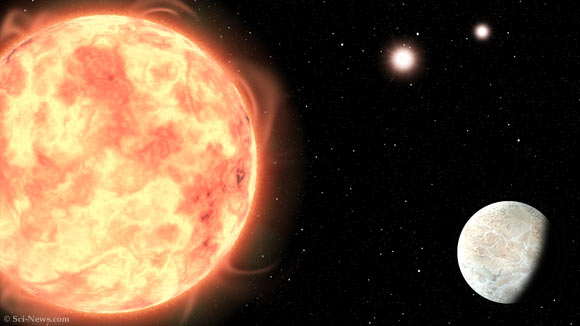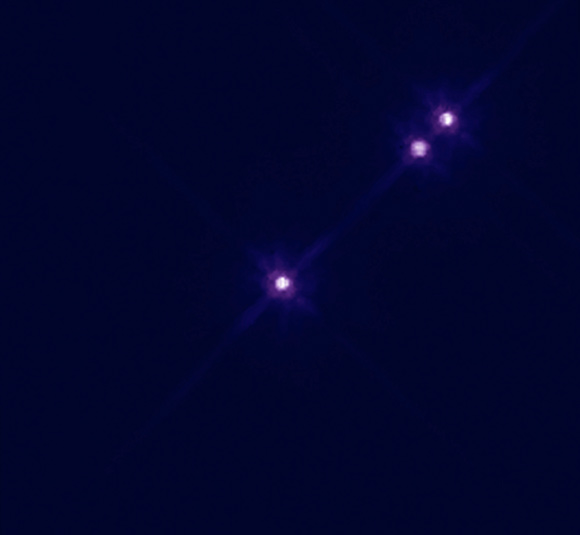Newly-Discovered Rocky Exoplanet Has Three Red Suns | Astronomy – Sci-News.com
Astronomers using NASA’s Transiting Exoplanet Survey Satellite (TESS) have discovered a terrestrial planet orbiting a star in the triple-star system LTT 1445.

An artist’s impression of LTT 1445Ab in the triple-star system LTT 1445. Image credit: Sci-News.com.
LTT 1445, also known as TIC 98796344, TOI 455, L 730-18 or BD-17 588, is a hierarchical trio of mid-to-late M-dwarfs (red dwarf stars) approximately 22.5 light-years away.
The newly-discovered world orbits LTT 1445A, the brightest member of the system.
Named LTT 1445Ab, the planet is about 1.35 times bigger than Earth, about 8.4 times more massive, and is rocky in composition.
It has an orbital period of 5.36 days and a surface temperature of about 311 degrees Fahrenheit (155 degrees Celsius).
“The orbital distance of LTT 1445Ab brings it closer to its host star than the annulus of the star’s habitable zone, where it receives 5.1 times the Sun’s irradiance from its host star,” said lead author Dr. Jennifer Winters from the Harvard-Smithsonian Center for Astrophysics and colleagues.

This image of the LTT 1445 system was obtained by the NASA/ESA Hubble Space Telescope in 2003. Image credit: NASA / ESA / Hubble / Sci-News.com / Winters et al.
LTT 1445Ab it is the second nearest transiting exoplanet found to date, the closest one known for which the primary is a red dwarf, and may be the most spectroscopically-accessible, rocky planet detected to-date for atmospheric studies.
“The planetary transit depth is significant (0.2%) and the host star is bright,” the astronomers said.
“The nearest transiting planetary system is HD 219134, at a distance of 21 light-years; but while its host star is brighter than LTT 1445A, the planetary transit depths are nearly an order of magnitude smaller.”
“In contrast, the multi-planet system TRAPPIST-1 at 41 light-years exhibits planetary transit depths that are, on average, a factor of three larger than that of LTT 1445Ab, but the host star is faint.”
“LTT 1445 is particularly favorable for ground-based observations to study the planet’s atmosphere, as the blended LTT 1445BC pair may provide a valuable calibration source with the same spectral type as that of the primary star, although its utility as a comparison source may be limited if it is the source of the variation and flaring seen in TESS,” they said.
The team’s paper will be published in the Astronomical Journal.
_____
Jennifer G. Winters et al. 2019. Three Red Suns in the Sky: A Transiting, Terrestrial Planet in a Triple M Dwarf System at 6.9 Parsecs. AJ, in press; arXiv: 1906.10147





